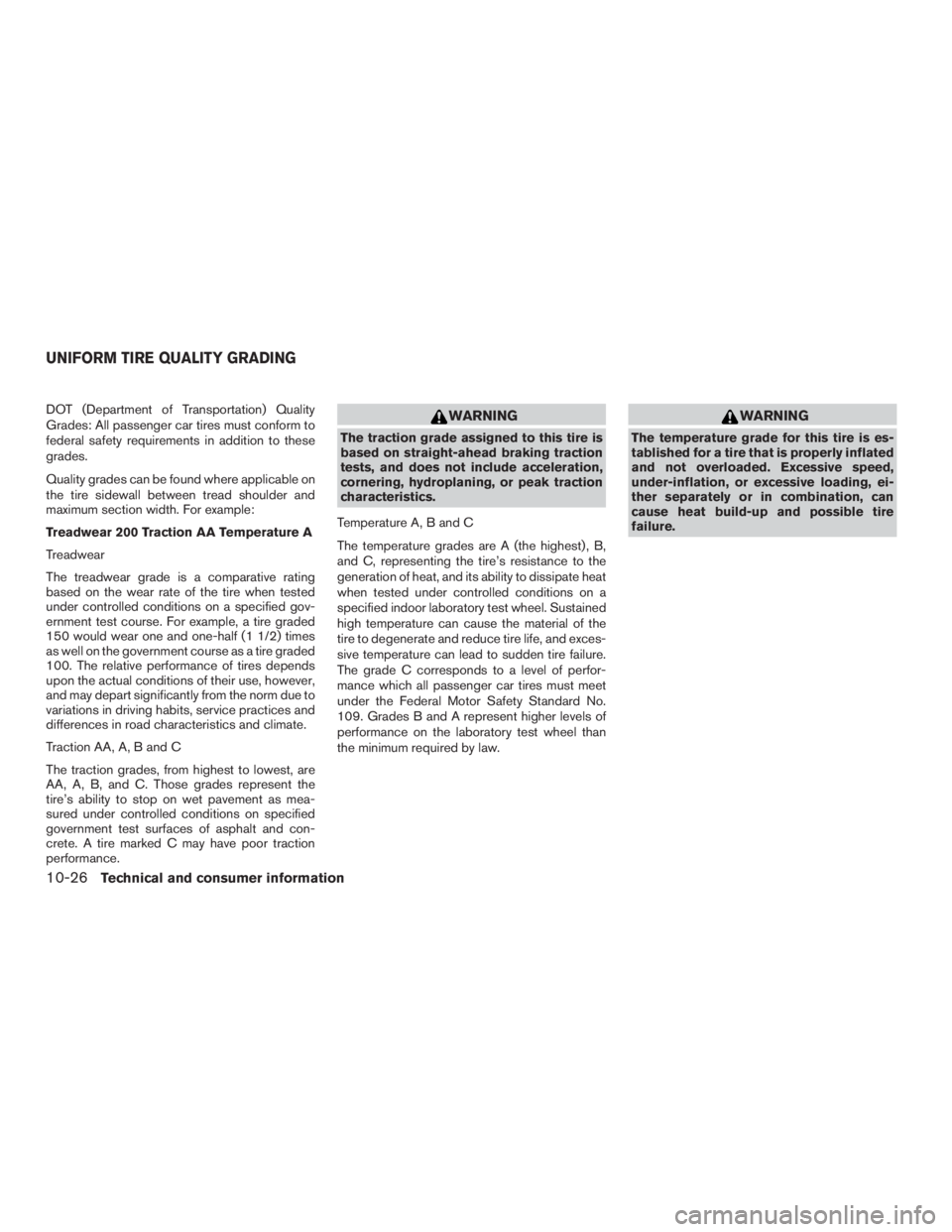Page 125 of 466
The climate controlled seat warms up or cools
down the front seat by blowing warm or cool air
from under the surface of the seat. The climate
control switch is located on the center console.
The climate controlled seat can be operated as
follows:1. Start the engine.
2. Turn the control knob
�Ato the heat side�1
or the cool side�2. The indicator light�Bon
the control knob will illuminate.
3. Adjust the desired amount of air using the control knob. The climate controlled seat
blower remains on low speed for approxi- mately 60 seconds after turning the switch
on or selecting the desired temperature.
4. When the vehicle’s interior is warmed or cooled, or before you leave the vehicle, be
sure to turn the control knob to the off (cen-
ter) position. The indicator light
�Bon the
control knob goes off with the switch in the
off (center) position.
To check the air filter for the climate controlled
seat, it is recommended that you visit a NISSAN
dealer.
Page 218 of 466
●When the outside and interior cabin tem-
peratures are moderate to high, the intake
setting may default to turn off air recircula-
tion to allow fresh air into the passenger
compartment. You may notice air flow from
the foot mode vent outlets for a maximum of
15 seconds. This is not a malfunction. After
the initial warm air is expelled, the intake will
return to automatic control, air flow outlet will
return to previous settings, and operation
may continue normally. To exit, press any
climate control button.
● Keep the moonroof (if so equipped) closed
while the air conditioner is in operation.
● If you feel that the air flow mode you have
selected and the outlets the air is coming out
do not match, select the
Page 449 of 466

DOT (Department of Transportation) Quality
Grades: All passenger car tires must conform to
federal safety requirements in addition to these
grades.
Quality grades can be found where applicable on
the tire sidewall between tread shoulder and
maximum section width. For example:
Treadwear 200 Traction AA Temperature A
Treadwear
The treadwear grade is a comparative rating
based on the wear rate of the tire when tested
under controlled conditions on a specified gov-
ernment test course. For example, a tire graded
150 would wear one and one-half (1 1/2) times
as well on the government course as a tire graded
100. The relative performance of tires depends
upon the actual conditions of their use, however,
and may depart significantly from the norm due to
variations in driving habits, service practices and
differences in road characteristics and climate.
Traction AA, A, B and C
The traction grades, from highest to lowest, are
AA, A, B, and C. Those grades represent the
tire’s ability to stop on wet pavement as mea-
sured under controlled conditions on specified
government test surfaces of asphalt and con-
crete. A tire marked C may have poor traction
performance.